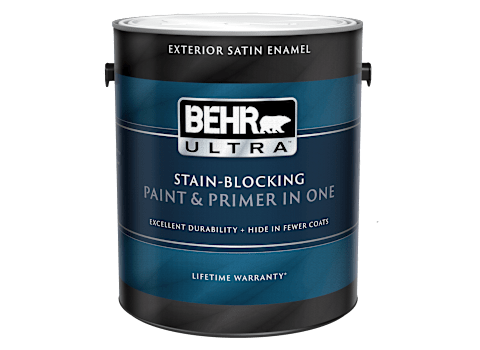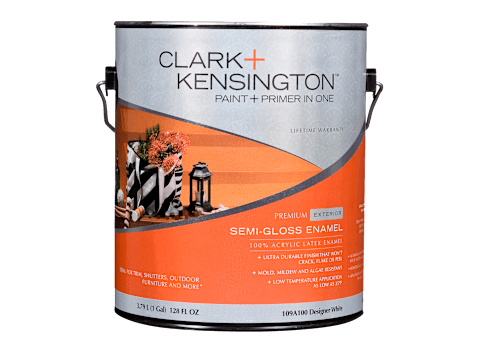How to Hire a Painter
Posted by admin on
Follow these tips to help ensure that your exterior project goes off without a hitch

By Tanya A. Christian
The exterior of your house is the first thing people see when they pull up to your property—and the paint is a big part of that. So whether you’re planning to stay in your home for a good long while or looking to sell, making sure the color looks crisp and clean can go a long way toward making a good first impression.
For the best results, most homeowners hire a professional painter to freshen up or completely repaint the exterior of their home. “Over time, paint fades and cracks. This not only makes the siding vulnerable to damage but also doesn’t look good,” says Rich Handel, Consumer Reports’ test project leader for paints. “A fresh coat of paint in a contemporary color can make your house go from drab to dramatic.”
All these benefits, of course, hinge on finding a capable contractor. To avoid miscommunication and disappointment, follow our must-know advice on how to hire a painter. Just a little due diligence will ensure a high-quality job that’ll boost your home’s curb appeal.
11 Tips for Hiring a Painter
Meet the pros. Consult with at least three different professional painters for your job. (Friends and family are good sources for references.) And be home for the initial meeting. That way, you can note how much time each contractor takes to assess the condition of your house. The longer it takes, the more realistic the estimate. Even an experienced exterior painter will need more than a quick walk around your house. Also ask each contractor about the size of his crew and their experience level.
State your expectations. The number of coats applied isn’t the only factor in determining the quality—and price—of the project. Preparation is also key. If you want a surface that’s free of unevenness from past paint jobs, tell the contractors—and be prepared to pay extra. But if you can live with some imperfections, agree on what level of prep is acceptable and what isn’t.
Get estimates. Seek a written estimate from each contractor. It should include a breakdown of labor, material costs, the number of coats of primer and paint, the brand and model of materials, and a detailed description of the amount of surface preparation that will be done.
Check references and examine past work. Get a list of references from each contractor and call them to find out about their experience with that contractor. A history of positive references is a good sign. Make sure to examine jobs from several years ago to see how each contractor’s work is holding up. And look at recent projects to check the skill of current crews.
Consider credentials. Membership in a trade or local business group isn’t a guarantee of quality work, but it shows a level of commitment and reliability. And verify whether the pro has the appropriate license(s). You’ll find the licensing information for your state at the Contractor’s License Reference Site. Check with the Better Business Bureau, the attorney general’s office in your state, or a local consumer-affairs agency to learn whether the contractor has a history of unresolved complaints.
Obtain a complete contract. Make sure this contract includes all key information: the contractor’s name, address, office and cell phone numbers, and license number, plus whatever details were in the estimate. Make sure the contract clearly states what is and isn’t included in the job.
Get a copy of the painter’s liability and workers compensation insurance certificates. If he doesn’t have coverage, you could be on the hook if, for example, the crew drops a ladder on your neighbor’s car or a crew member gets hurt on the job.
Ask for a guarantee. The painter should promise to correct any chipping, peeling, blistering, flaking, or excessive fading or chalking that occurs within two years after the job is done at no or little cost. If he tells you the paint itself has a warranty, remember that doesn’t include labor, which is a far more costly proposition than material.
Choose the paint yourself. Your painter might try to talk you into a paint he prefers, but use the one you want. “A good quality exterior paint provides a barrier to the elements, protecting your siding from direct exposure to the sun and moisture,” Handel says. “This goes a long way to reducing the chances of weather-related deterioration.” For top paints, CR members can check out our latest paint ratings, below.
Look for lead. If your home was built before 1978, older coats of paint could contain lead. That means the painter might need to take extra precautions to avoid any hazards. To learn how to identify lead paint and what measures your contractor needs to take before removing it, learn how to tell if you have lead paint in your home.
Hold out. Don’t make a large down payment before the job begins. Contractors vary, but 10 to 15 percent is reasonable for a deposit. Handel also suggests making payments in quarters as the work progresses. And before making a final payment, do a walk-around to inspect the house closely to ensure nothing was missed. Don’t make a final payment until the job is complete and you’re fully satisfied with the result.
3 Best Exterior Paints From CR's Tests
Even the best painters can’t nail the job with poor-quality paint. To find options that are likely to last the longest, our engineers have evaluated more than a dozen paints with a series of rigorous tests. The picks below scored best overall for resisting cracking, color change, dirt, and mildew in extreme conditions equivalent to nine years of environmental exposure.
Behr Marquee Exterior (Home Depot)

Behr Ultra Exterior (Home Depot)

Clark + Kensington Exterior (Ace)

Consumer Reports is an independent, nonprofit organization that works side by side with consumers to create a fairer, safer, and healthier world. CR does not endorse products or services, and does not accept advertising. Copyright © 2022, Consumer Reports, Inc.
